Peak District Summer 2024 – a slime mould, a fungus, a furry alga and a lichen mushroom!
This summer I was in the Peak District twice transporting the daughter to their DofE practice and assessed expeditions.
Late July, in the woodland around the superb Lud’s Church, I spotted some vinaceous Lycogala aethalia with scarlet plasmodia. Although the form of the aethalia is the same — the usual aethalia colour we see in and around Norwich is the more typical salmon/peach (young) to greyish-brown/dark grey (mature).
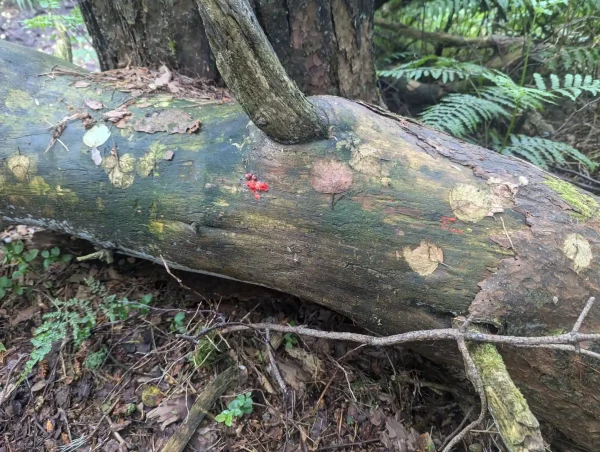
Lud’s Church woodland – 22nd July 2024
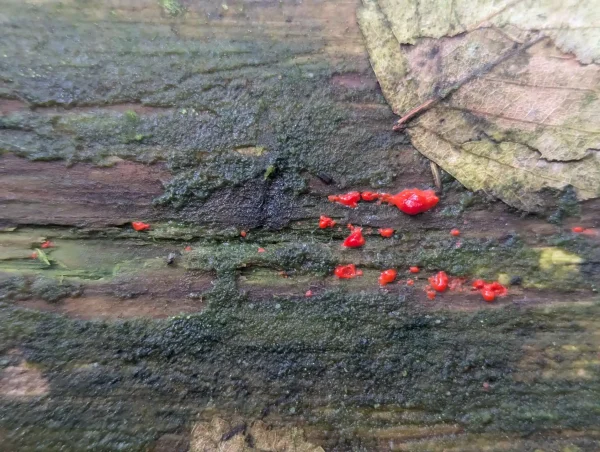
Lud’s Church woodland – 22nd July 2024
In his work Myxomycetes of Britain and Ireland: An Identification Handbook (1999), Bruce Ing states that the plasmodium of L. epidendrum is “pure red or carmine, without orange tints” and suggests that the salmon/peach plasmodium is that of L. terrestre.
However, in recent years researchers have proposed to retain the name L. epidendrum for the globally most abundant species and that they do not recognize the species L. terrestre. I attempted to make some sense of this in this post.

Lud’s Church woodland – 22nd July 2024
The superb Lud’s Church.
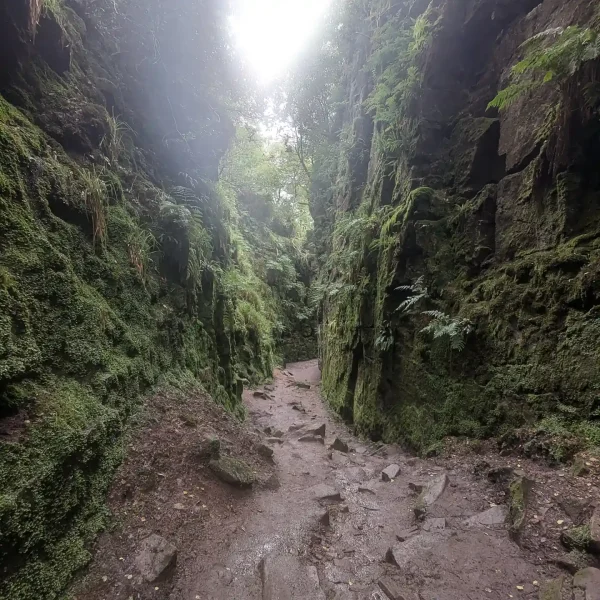
22nd July 2024
In late August, in the lower valley of Nether Red Brook on the northern edge of the Kinder plateau, I spotted what I think is Galerina paludosa — bog bell — in the moss.
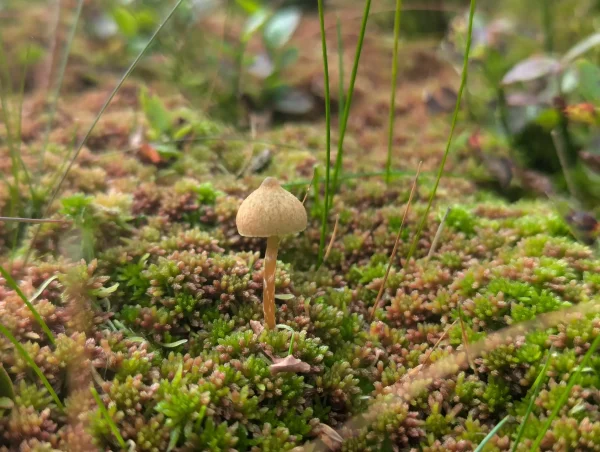
Lower Nether Red Brook valley
27th August 2024
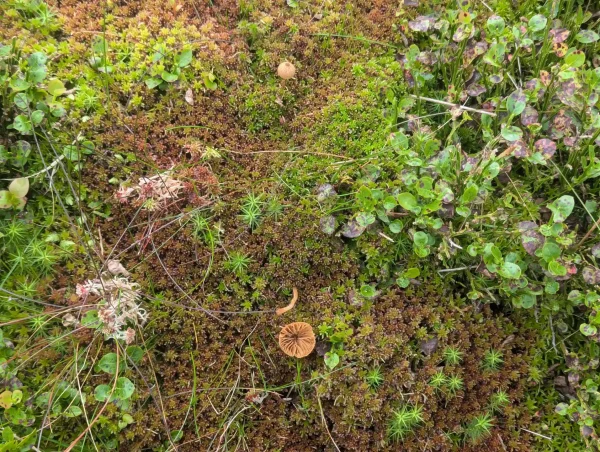
Lower Nether Red Brook valley
27th August 2024

Lower Nether Red Brook valley
27th August 2024
Near the start of the scramble a flash of vibrant orange caught my eye further up the brook. I thought it must be some lost garment fragment or worse — someone had spray painted the rock!
Closer up — it wasn’t fabric or plastic.
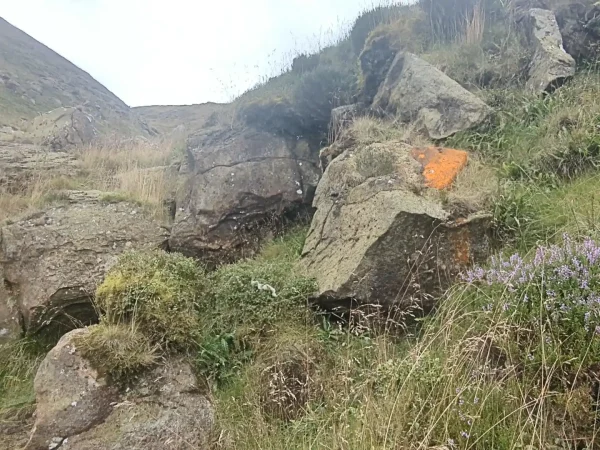
Nether Red Brook – 27th August 2024
And not a vandalised rock, but turned out to be a large colony of furry growths most likely Trentepohlia aurea — a green algae. The orange colouration a result of carotenoid pigments within the algal cells.
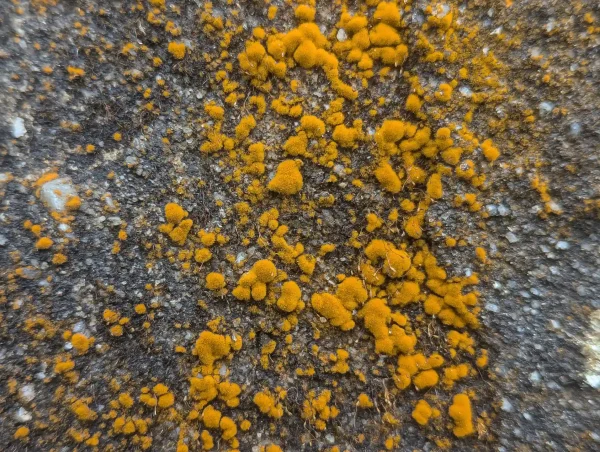
Nether Red Brook – 27th August 2024
I was really excited to see this thinking it was a first for me. However, I realised that I must have encountered this alga before, but never as such a large colony to warrant a second glance.
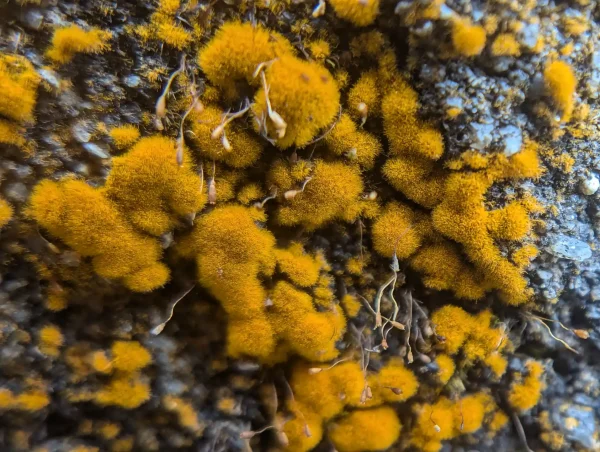
Nether Red Brook – 27th August 2024
Further up the scramble, in a void between some boulders, I spotted what I thought were fungi seemingly growing from the rock!
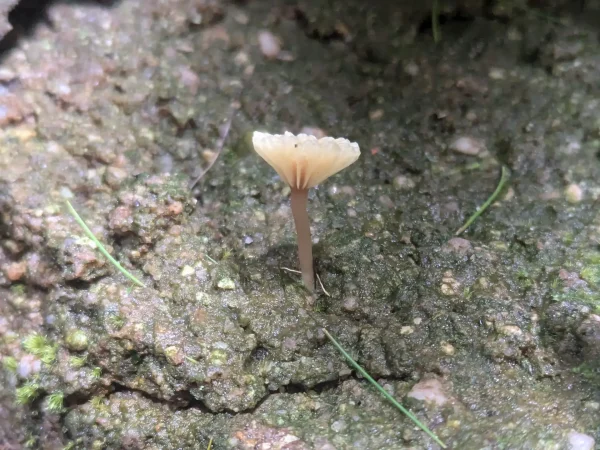
Nether Red Brook – 27th August 2024
Back at home, a Google image search and further reading suggests that this is a lichen, a basidiolichen — Lichenomphalia umbellifera the lichen agaric or the green-pea mushroom lichen.
Most lichens are a symbiotic relationship between an alga (the photobiont) and an ascomycota (sac fungi) fungal partner but L. umbellifera is unusual in that the fungal partner is a Basidiomycota — the lichen produces a gilled mushroom. The algal partner — Coccomyxa — is made up of small, green, globular structures that appears as a sugar dusting [1] over the substrate — hence the name green-pea mushroom lichen I guess.
In the photos above and below there seems not to be a sugar dusting but the rock was wet and there seems to be a greenish gelatinous coating to the rock surface.
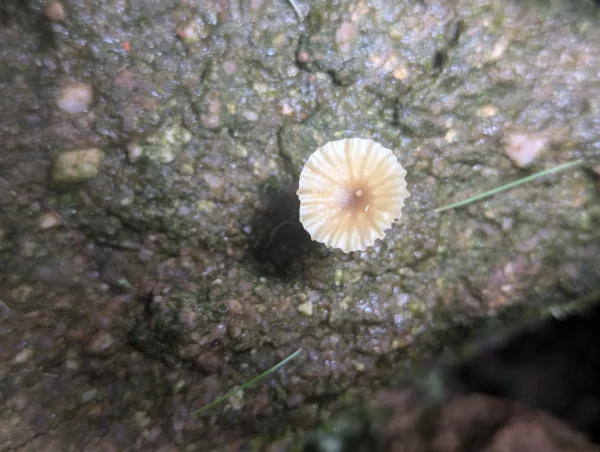
Nether Red Brook – 27th August 2024
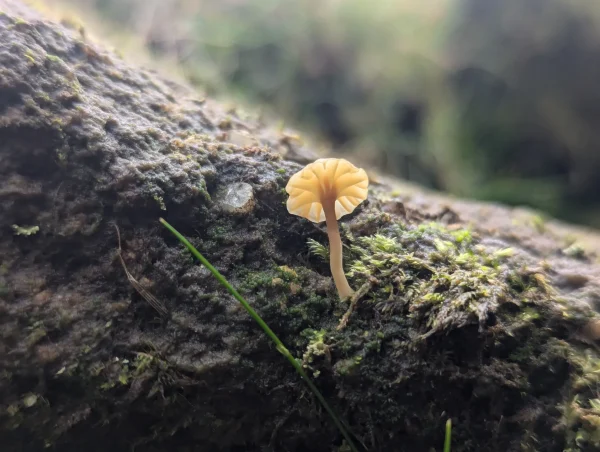
Nether Red Brook – 27th August 2024
Shortly after Nether Red Brook, walking along the Kinder edge path I spotted a group of mushrooms that at the time I didn’t connect as similar but clearly they are also Lichenomphalia umbellifera.
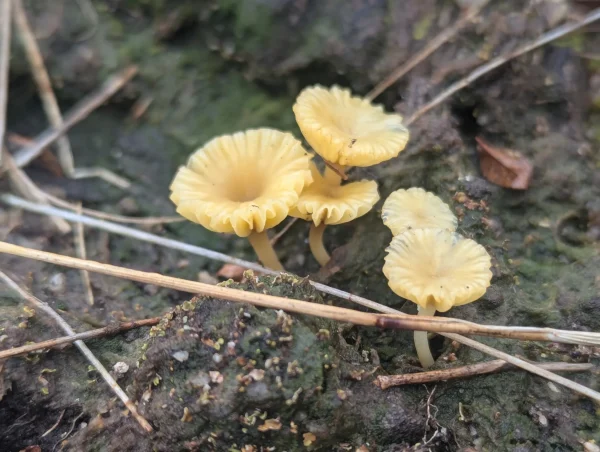
Kinder north edge path – 27th August 2024
On both visits I stayed at Edale YHA and the last time I was there — in 2015 — I took a photo of the hostel brickwork which intrigued me.
Some corbeling detail showing five thin brick courses matching three regular course.

22nd July 2024
Brick plinth detail.
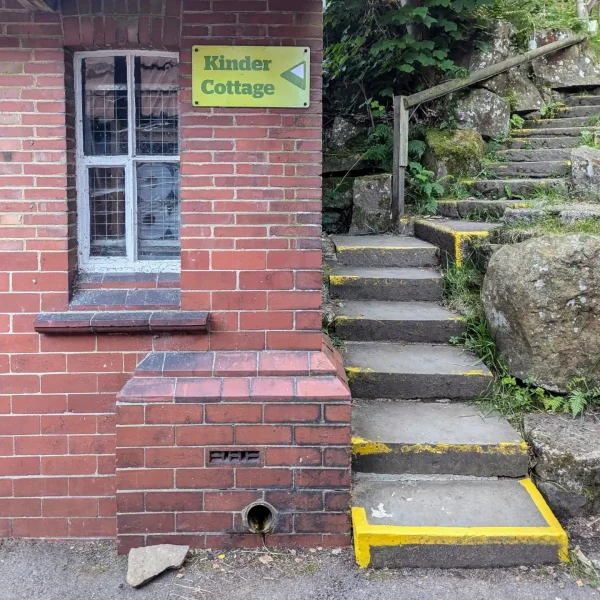
22nd July 2024
Church style architecture.

22nd July 2024
This PDF (opens in new tab) at the Simply Hostels website outlining the history of the Edale hostel mentions this red brick outbuilding in the above photo as the “intriguing Edges building” and speculation that the crucifix (and I guess the architectural style of this section of the building) suggested a chapel over some stables — the ground floor here before conversion to hostel facilities was cobbled with drainage channels.
Below are some additional photos from the visits to the Peak District.
On the path towards Hazelwood Road/Clough Head Lane down from The Roaches there was water stop tap cover cut into the flagstone!


22nd July 2024
Sun peaking over Wolfscote Dale.

23rd July 2024
After Peaseland Rocks, steep steps up the west bank of the Dove river.
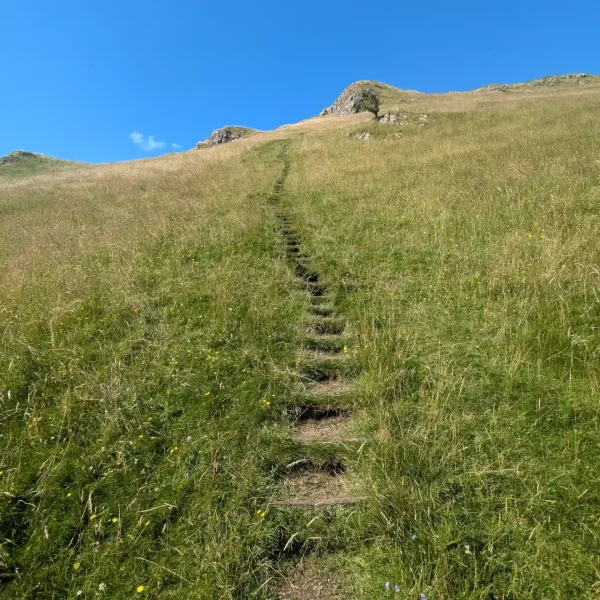
23rd July 2024
Danger after Milldale village

23rd July 2024
Half blocked opening near Milldale village.
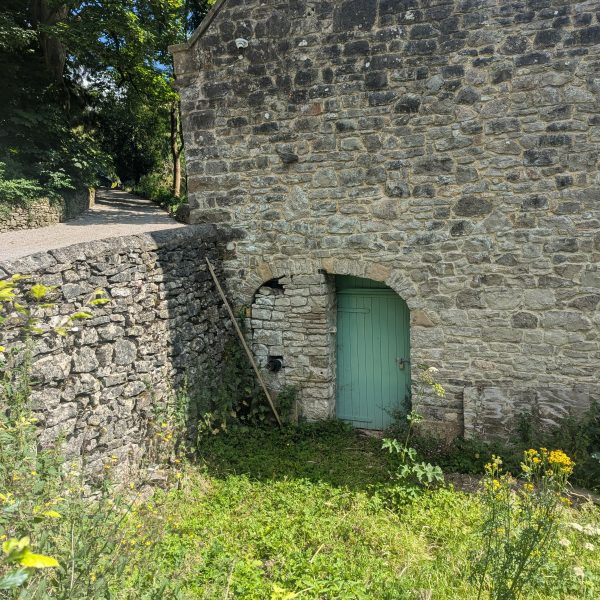
23rd July 2024
Lichen colonising the shoe of a downpipe.
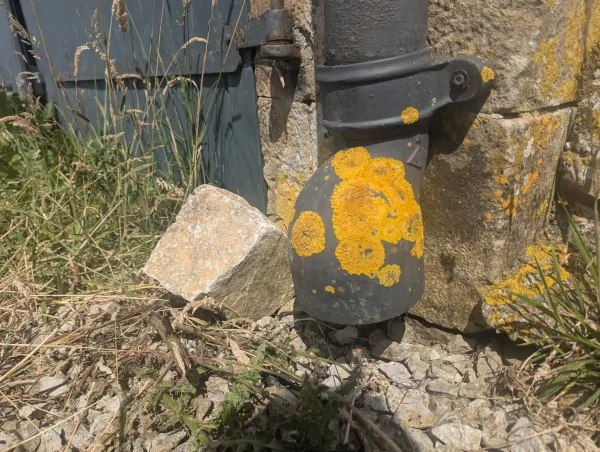
23rd July 2024
[1] https://www.fungusfactfriday.com/230-lichenomphalia-umbellifera/